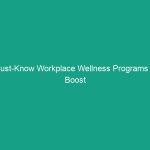Good Morning Team!
Today, we’re going to discuss an important topic that affects each one of us on the job—Must-Know Truck Driving Hazards On and Off the Road. Understanding these Hazards is crucial for our Safety and the Safety of others. As professional truck drivers, we face unique challenges every day, and it’s vital that we stay informed and prepared.
Understanding Truck Driving Hazards
Truck driving hazards refer to the various risks and dangers that drivers encounter while operating a vehicle, both on the road and in the workplace. These hazards can lead to accidents, injuries, or even fatalities if not properly managed. It’s essential to recognize these hazards to mitigate risks effectively.
Many people may think that truck driving is just about handling the vehicle; however, it involves much more. It’s about awareness, decision-making, and understanding the Environment around you. Ignoring potential risks can lead to serious consequences, including damage to property and severe injuries to yourself and others.
Key Hazards, Risks, and Safety Considerations
Let’s take a closer look at some specific hazards associated with truck driving:
- Blind Spots: Large trucks have significant blind spots, making it difficult to see other vehicles, cyclists, or pedestrians. Always check mirrors and use turn signals to communicate with other road users.
- Weather Conditions: Rain, snow, fog, and ice can severely affect driving conditions. Adjust your speed and maintain a safe distance from other vehicles during adverse weather.
- Fatigue: Long hours on the road can lead to driver fatigue, negatively impacting reaction times and decision-making. Ensure you take regular breaks and adhere to hours of service Regulations.
- Improper Loading: Overloading or unevenly distributing cargo can affect vehicle stability and braking. Always ensure loads are secured and balanced according to regulations.
- Road Conditions: Potholes, construction zones, and debris can create hazardous driving conditions. Stay vigilant and adjust your driving to accommodate these obstacles.
Ignoring these hazards can lead to real-world consequences. For example, a driver who doesn’t check their blind spots may collide with another vehicle, causing severe injuries. Similarly, driving in poor weather without caution can result in accidents that could have been avoided.
Best Practices, Procedures, & Actionable Advice
Now that we’ve identified some hazards, let’s discuss how to stay safe. Here are some Best Practices that you can follow:
- Pre-Trip Inspections: Always perform a thorough inspection of your vehicle before hitting the road. Check brakes, lights, and tire conditions to ensure everything is in working order.
- Use Technology: Make use of technology such as GPS and lane departure warnings to enhance your situational awareness on the road.
- Plan Your Route: Before starting your journey, plan your route carefully. Be aware of road conditions, construction, and traffic patterns to avoid unnecessary delays and hazards.
- Stay Hydrated and Rested: Drink plenty of water and take breaks to avoid fatigue. A well-rested driver is a safer driver.
- Communicate: Use hand signals or CB radios to communicate with other drivers when necessary, especially in tight or complex driving situations.
Take, for instance, a case where a driver ignored the need for a pre-trip inspection. They later experienced brake failure on a downhill slope, leading to a significant accident. This incident underscores the importance of thorough inspections and proactive measures.
Regulations, Standards, and Compliance
Compliance with safety regulations is not just a legal obligation—it’s a critical component of Workplace Safety. Familiarize yourself with relevant regulations such as:
- OSHA Standards for Workplace Safety
- Department of Transportation (DOT) regulations for commercial drivers
- Your company’s specific safety protocols and Procedures
Understanding these regulations helps protect you and your colleagues. Compliance also ensures that our company maintains a good reputation and avoids potential fines or legal issues.
Employee Engagement & Discussion
Now, let’s take a moment to engage in a discussion. Think about your experiences on the road. What safety challenges have you encountered related to truck driving hazards? Feel free to share any tips or strategies that have worked for you in avoiding these hazards.
Conclusion & Key Takeaways
In conclusion, understanding and addressing truck driving hazards is essential for our safety. Key takeaways from today’s talk include:
- Recognize the various hazards associated with truck driving.
- Adhere to Best Practices and safety procedures to mitigate risks.
- Stay informed about regulations and compliance standards.
Let’s all commit to prioritizing safety in our daily operations. Thank you for your attention and dedication to maintaining a safe working environment. Together, we can ensure that everyone makes it home safely at the end of the day!


